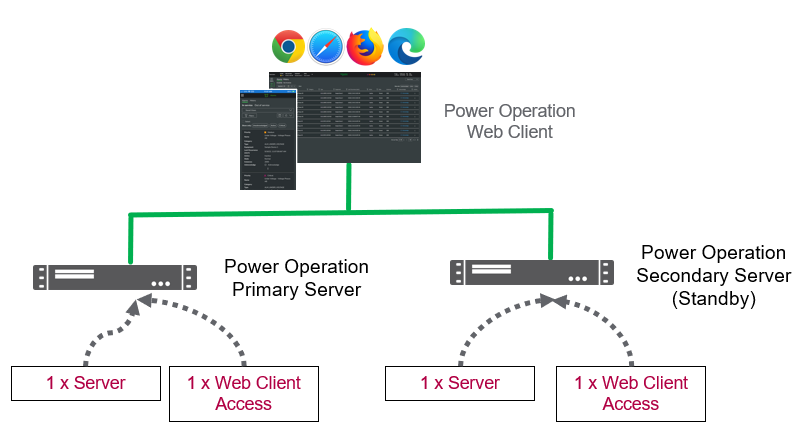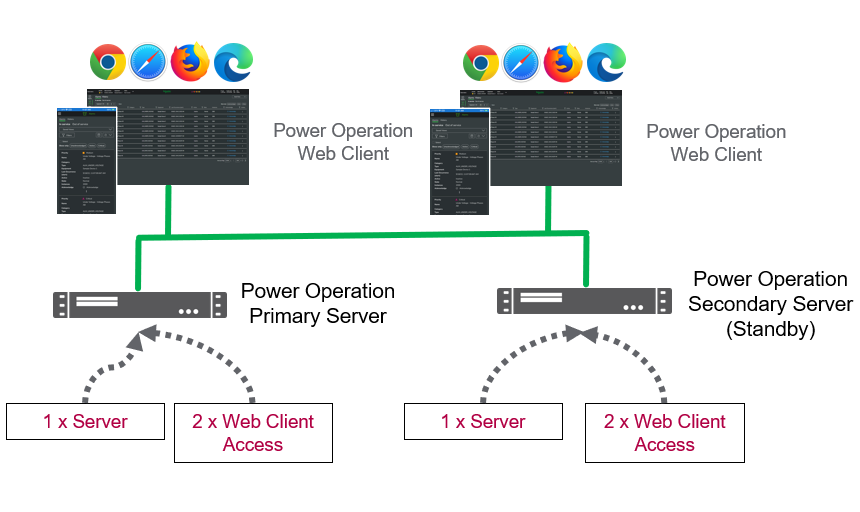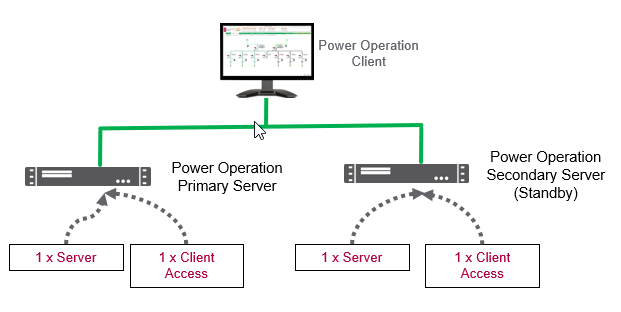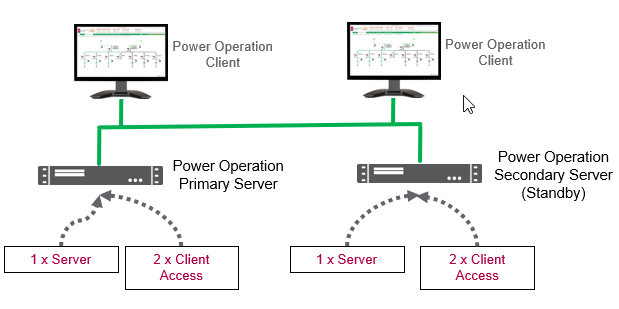Client Access component architectures
Architecture #1: Server redundancy with Web Client Access
The following example architecture illustrates server redundancy with Web Client Access:

Server software and licenses are installed on the Primary and Secondary Server machines.
By placing the Web Client Access license on the Server machine, the client could be accessed using the HTML5 web client.
Client connectivity is limited to one simultaneous connection due to having one Web Client license.
Architecture #2: Server redundancy with two Web Client Access licenses
The following example architecture illustrates server redundancy with two Web Client Access licenses:

Server software and licenses are installed on the Primary and Secondary Server machines.
By placing a Web Client Access license on the Server machine, the client could be accessed using the HTML5 web client.
Client connectivity is limited to two simultaneous connections due to having two Web Client Access licenses.
Architecture #3: Server redundancy with Thick Client Access
The following example architecture illustrates server redundancy with Thick Client Access:

Server software and licenses are installed on the Primary and Secondary Server machines.
By placing a Client Access license on the Server machine, the Client could be accessed using a built-in web client or Windows desktop application.
Client connectivity is limited to one simultaneous connection due to having one Client license.
Architecture # 4: Server redundancy with two Thick Client Accesses
The following example architecture illustrates server redundancy with two Thick Client Accesses:

Server software and licenses are installed on the Primary and Secondary Server machines.
By placing a Client Access license on the Server machine, the client could be accessed using a web client or Windows desktop application.
Client connectivity is limited to two simultaneous connections due to having two Client licenses.